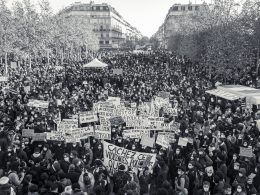The Origins of Street Art
Street art has its roots in graffiti, which emerged in the late 1960s and early 1970s in New York City. Graffiti was a form of self-expression for disenfranchised youth who felt marginalized by society. They used spray paint and markers to write their names and messages on walls, buildings, and subway trains.
Over time, graffiti evolved into a more elaborate and artistic form of expression. Artists began to use stencils, stickers, and wheatpaste to create more intricate and detailed works. They also started to incorporate political and social commentary into their art.
The Rise of Street Art
In the 1980s, street art began to gain recognition as a legitimate art form. Artists like Keith Haring and Jean-Michel Basquiat gained fame for their street art-inspired works, which were exhibited in galleries and museums.
Street art continued to evolve in the 1990s and 2000s, with artists like Banksy, Shepard Fairey, and Invader gaining international recognition for their work. These artists used a variety of techniques, including stenciling, wheatpasting, and murals, to create thought-provoking and visually stunning works of art.
The Impact of Street Art on Mainstream Culture
Street art has had a significant impact on mainstream culture. It has challenged traditional notions of what art is and where it belongs. Street art has also brought attention to social and political issues, such as poverty, inequality, and environmentalism.
Street art has also influenced other art forms, such as fashion and design. Street art-inspired clothing and accessories have become popular, and street art-inspired designs have been used in advertising campaigns and product packaging.
In addition, street art has become a tourist attraction in many cities around the world. Cities like Berlin, London, and New York have become known for their vibrant street art scenes, and tourists flock to these cities to see the works of famous street artists.
The Future of Street Art
As street art continues to evolve, it is likely to have an even greater impact on mainstream culture. Street art is becoming more accepted and celebrated, and it is likely that we will see more street art-inspired works in galleries and museums.
However, street art will always have a connection to the streets. It is a form of art that is accessible to everyone, regardless of their background or education. Street art will continue to challenge traditional notions of what art is and where it belongs, and it will continue to bring attention to social and political issues.
Conclusion
Street art has come a long way from its origins as a form of graffiti. It has evolved into a respected and celebrated art form that has had a significant impact on mainstream culture. Street art has challenged traditional notions of what art is and where it belongs, and it has brought attention to social and political issues. As street art continues to evolve, it is likely to have an even greater impact on mainstream culture in the future.











